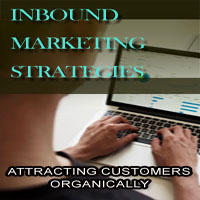



In the fast-paced world of digital marketing, the mobile platform has emerged as a vital arena for reaching and engaging with audiences. As mobile device usage continues to soar, businesses must formulate effective mobile marketing strategies to connect with their customers on the go. In this article, we'll explore essential mobile marketing strategies that can lead to success in this dynamic landscape.
1. Responsive Web Design
A mobile marketing strategy begins with ensuring that your website is mobile-friendly. With the majority of internet traffic coming from mobile devices, it's crucial that your website is responsive and adapts seamlessly to various screen sizes. A user-friendly, mobile-optimized website is the foundation of any successful mobile marketing campaign.
2. Mobile Apps
Developing a dedicated mobile app for your brand can be a powerful strategy. Mobile apps offer a direct channel to your customers, providing them with a convenient and personalized experience. An app can also leverage push notifications, allowing you to reach users with timely updates, promotions, and other relevant content.
3. Social Media Marketing
Leverage the power of social media platforms for mobile marketing. Platforms like Facebook, Instagram, Twitter, and LinkedIn have large mobile user bases. Crafting engaging content, running targeted ads, and utilizing mobile-specific features such as Instagram Stories can help you connect with your audience effectively.
4. SMS Marketing
Text messaging, or SMS marketing, is an immediate and direct way to engage with your customers. Sending promotional offers, updates, and important information via text messages can be highly effective. However, it's important to obtain explicit consent from users and provide an easy opt-out option to respect their privacy.
5. Location-Based Marketing
Utilize the location data provided by mobile devices to deliver relevant and timely messages to users based on their geographic location. Geofencing, for instance, allows you to send notifications or offers to users when they enter a specific geographical area, such as near your store or a competitor's location.
6. Mobile SEO
Optimize your website and content for mobile search engines. Mobile SEO is essential to ensure that your website ranks well in mobile search results. Factors like page load speed, mobile-friendly design, and local SEO optimization play a significant role in mobile search rankings.
7. Video Marketing
The popularity of video content on mobile devices is undeniable. Create engaging video content that is optimized for mobile consumption. Platforms like YouTube, TikTok, and Instagram are ideal for sharing video content and reaching a broad audience.
8. Mobile-First Design
Design your marketing materials, including email campaigns and landing pages, with a mobile-first approach. Ensure that your content is easily readable and navigable on mobile screens, as users often access emails and websites on their smartphones.
9. Mobile Analytics
Utilize mobile analytics tools to gather data about user behavior and campaign performance. This data can help you refine your strategies and make data-driven decisions for optimizing your mobile marketing efforts.
10. Personalization
Leverage user data to provide personalized experiences. Targeted and relevant content resonates more with users, leading to better engagement and conversion rates.
Mastering mobile marketing strategies is essential for staying competitive in today's digital landscape. As the use of mobile devices continues to rise, it's crucial to adapt and implement these strategies to effectively connect with your audience on the go. Whether through responsive web design, mobile apps, social media marketing, or other techniques, a well-crafted mobile marketing strategy can drive success and help your business thrive in the mobile-centric world.
 3. Focused Call To Action (CTA): Your offer design should prominently feature a clear and compelling call to action. Use action-oriented language such as "Buy Now," "Get Started," or "Claim Your Offer." Make sure the CTA button or link stands out visually, often using contrasting colors.
3. Focused Call To Action (CTA): Your offer design should prominently feature a clear and compelling call to action. Use action-oriented language such as "Buy Now," "Get Started," or "Claim Your Offer." Make sure the CTA button or link stands out visually, often using contrasting colors.
4. Mobile Responsiveness: In an increasingly mobile-driven world, it's imperative that your offer is designed to be responsive to different devices and screen sizes. A seamless mobile experience is essential for capturing conversions from users on smartphones and tablets.
5. A/B Testing: To achieve conversion excellence, A/B testing is essential. Create different designs and variations of your offers and test them with your audience to see which design performs best. Continuously iterate based on the results to optimize your offer design.
6. Trust Signals: Incorporate trust-building elements into your offer design. This could include security badges, customer testimonials, or industry certifications. These signals can boost confidence and encourage potential customers to take action.
7. Use Of Color Psychology: Colors have a profound impact on human psychology. Use colors strategically in your offer design to evoke emotions or convey specific messages. For example, red can create a sense of urgency, while green is associated with trust and positivity.
8. Visual Hierarchy: Design your offer with a clear visual hierarchy. Guide the viewer's eye to the most important elements, such as the value proposition, CTA, and any discounts or incentives. Use font size, color, and placement to prioritize these elements.
9. Personalization: Whenever possible, personalize your offer design. Address customers by their name, recommend products or services based on their past behavior, and tailor the design to their preferences. Personalized offers have a higher chance of conversion.


 Enhanced Customer Engagement: Personalized offers grab the attention of customers more effectively than generic promotions. When customers feel that a company understands their needs and preferences, they are more likely to engage with the brand.
Enhanced Customer Engagement: Personalized offers grab the attention of customers more effectively than generic promotions. When customers feel that a company understands their needs and preferences, they are more likely to engage with the brand.
Improved Conversion Rates: Personalized offers are more likely to resonate with customers, making them more likely to convert. Whether it's making a purchase, signing up for a service, or responding to a call to action, customers are more inclined to take the desired steps when the offer is tailored to their interests.
Higher Customer Satisfaction: When customers receive offers that align with their preferences, they experience a greater sense of satisfaction. It demonstrates that the business values their individual needs, leading to stronger customer loyalty.
Reduced Cart Abandonment: Personalized recommendations, such as product suggestions based on previous purchases, can significantly reduce cart abandonment rates. When customers find items that match their interests, they are less likely to leave the website without making a purchase.
Increased Customer Lifetime Value: Personalized offers can lead to long-term relationships with customers. As customers receive value from tailored offers, they are more likely to become repeat buyers and brand advocates, ultimately contributing to higher customer lifetime value.
Implementing Offer Personalization:
Segment Your Audience: Start by categorizing your customer base into segments based on their characteristics, behaviors, or preferences. This allows you to create personalized offers for each group.
The Triumph Of Entrepreneurship From Home Offices
 Hewlett-Packard: Bill Hewlett and Dave Packard founded HP in 1939, starting in a small garage in Palo Alto, California. Their early work on audio oscillators and other equipment laid the foundation for one of the world's largest information technology companies.
Hewlett-Packard: Bill Hewlett and Dave Packard founded HP in 1939, starting in a small garage in Palo Alto, California. Their early work on audio oscillators and other equipment laid the foundation for one of the world's largest information technology companies.
Disney: The Walt Disney Company, now a media conglomerate, was initially conceived in a one-car garage in Los Angeles by Walt Disney and Roy O. Disney. Their early animation work eventually led to the creation of iconic characters like Mickey Mouse and the expansion of Disney's global brand.
Microsoft: Bill Gates and Paul Allen's journey began in a garage in Albuquerque, New Mexico, in 1975 when they developed the first microcomputer for personal use. This marked the birth of Microsoft, a company that has had a profound impact on the computer industry.
Harley-Davidson: In 1901, William S. Harley designed the first blueprint of a motorized bicycle engine in his small workshop in Milwaukee. This marked the beginning of Harley-Davidson, a company known worldwide for its iconic motorcycles.
Under Armour: Kevin Plank, the founder of Under Armour, started his sports apparel company from his grandmother's basement in Washington, D.C. The brand has since grown into a major player in the athletic wear industry.
Slack: This popular team collaboration platform started as a gaming company called Tiny Speck, and its founders developed a communication tool for internal use. As their new project gained attention, Slack Technologies was born, showcasing the potential for innovation even in unexpected places.






Strategies For Success
 Content Marketing: Creating valuable and relevant content, such as blog posts, articles, videos, or infographics, can establish your authority in your niche and draw in a loyal audience. High-quality content can also rank well in search engines and attract visitors who are more likely to convert.
Content Marketing: Creating valuable and relevant content, such as blog posts, articles, videos, or infographics, can establish your authority in your niche and draw in a loyal audience. High-quality content can also rank well in search engines and attract visitors who are more likely to convert.
Social Media Marketing: Leveraging social media platforms is an effective way to connect with your audience and drive online sales. Engage with your followers through interactive posts, promotions, and ads to encourage purchases.
Email Marketing: Building an email list and nurturing your subscribers with tailored content and special offers can be a powerful tool for driving sales. Email marketing campaigns can remind potential customers of your products and entice them to make a purchase.
Pay-Per-Click (PPC) Advertising: PPC advertising, such as Google Ads, allows you to bid for ad placement in search engine results or on various websites. These ads can quickly drive traffic to your website and boost online sales.
Conversion Rate Optimization (CRO): Focusing on CRO involves enhancing your website's design, content, and user experience to encourage visitors to take action. By streamlining the purchase process, you can improve conversion rates and boost sales.
Understanding Your Target Audience
One of the cornerstones of successful online sales generation is knowing your target audience. Conduct thorough market research to understand your potential customers' needs, preferences, and pain points. Tailoring your marketing messages to address these specifics can greatly enhance your online sales strategy.
E-commerce Platforms And User-Friendly Websites
Having an effective e-commerce platform and user-friendly website is crucial for online sales. Your website should be easy to navigate, load quickly, and have a secure and user-friendly checkout process.
A Roadmap To Success
 2. Building And Nurturing An Audience
2. Building And Nurturing An Audience
One of the core challenges of affiliate marketing is building and nurturing an engaged audience. Success often hinges on having a dedicated following, which takes time and consistent effort. Affiliates must provide valuable content, maintain transparency, and build trust with their audience.
3. Content Quality
High-quality content is essential for attracting and retaining an audience. Producing compelling and relevant content that resonates with your target market is a challenge that affiliate marketers face. Striking a balance between informative and promotional content can be tricky, but it's crucial for long-term success.
4. Compliance And Regulations
Affiliate marketers must navigate advertising and affiliate marketing regulations, which can vary by region and platform. It's essential to stay compliant with these rules to avoid legal issues. Disclosure of affiliate relationships and transparency is particularly important to meet compliance requirements.
5. Attribution Challenges
Tracking the source of conversions and correctly attributing them to the appropriate affiliate can be complex. Marketers need robust tracking systems to ensure accurate commission payments. Solving attribution challenges often involves advanced analytics and attribution modeling.
6. Changing Algorithms And Policies
Search engine algorithms and advertising platform policies are continually changing. This can affect the visibility of affiliate content and impact campaigns. Staying informed about platform updates and adjusting strategies accordingly is essential to adapt to evolving digital landscapes.